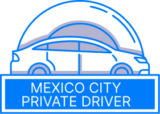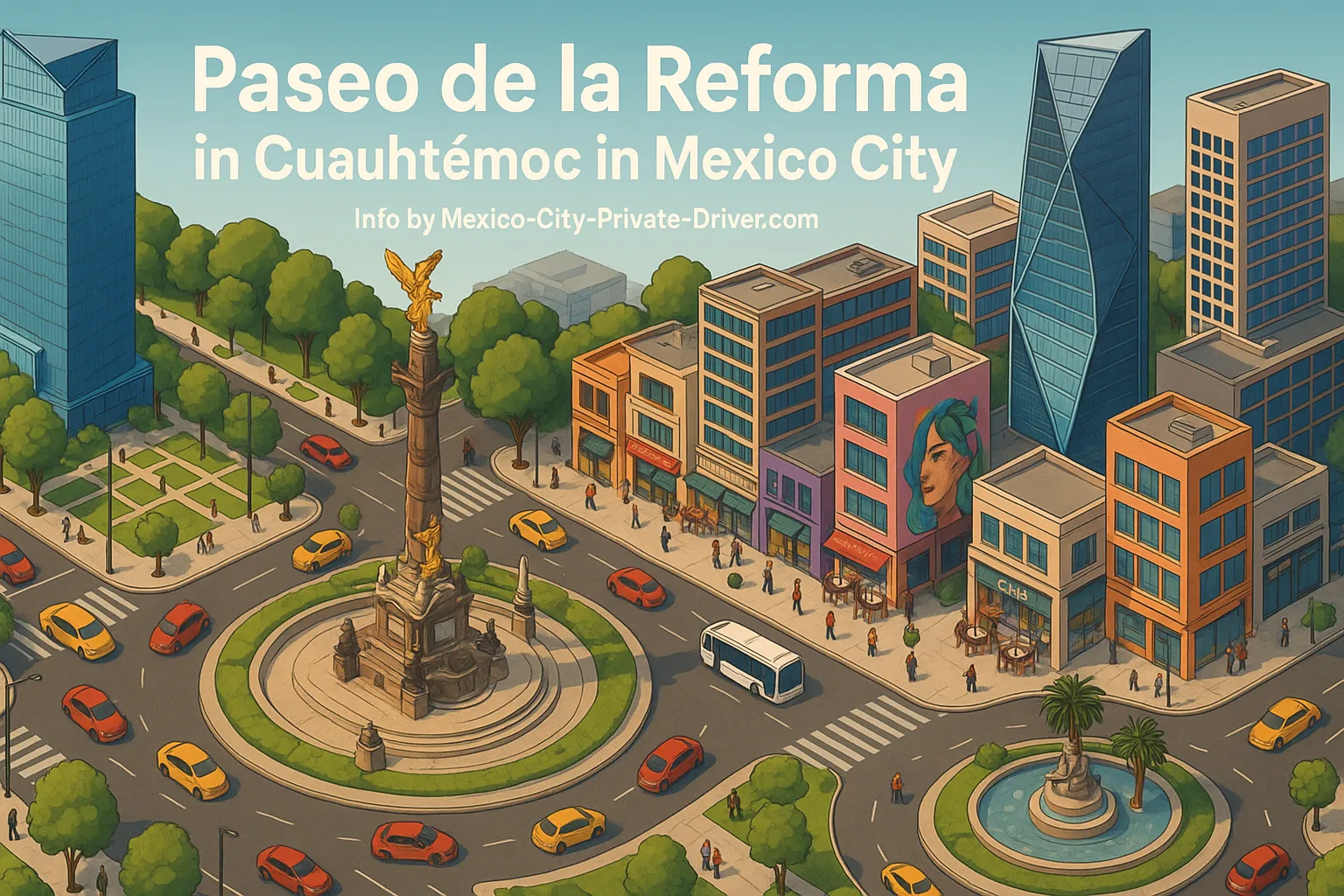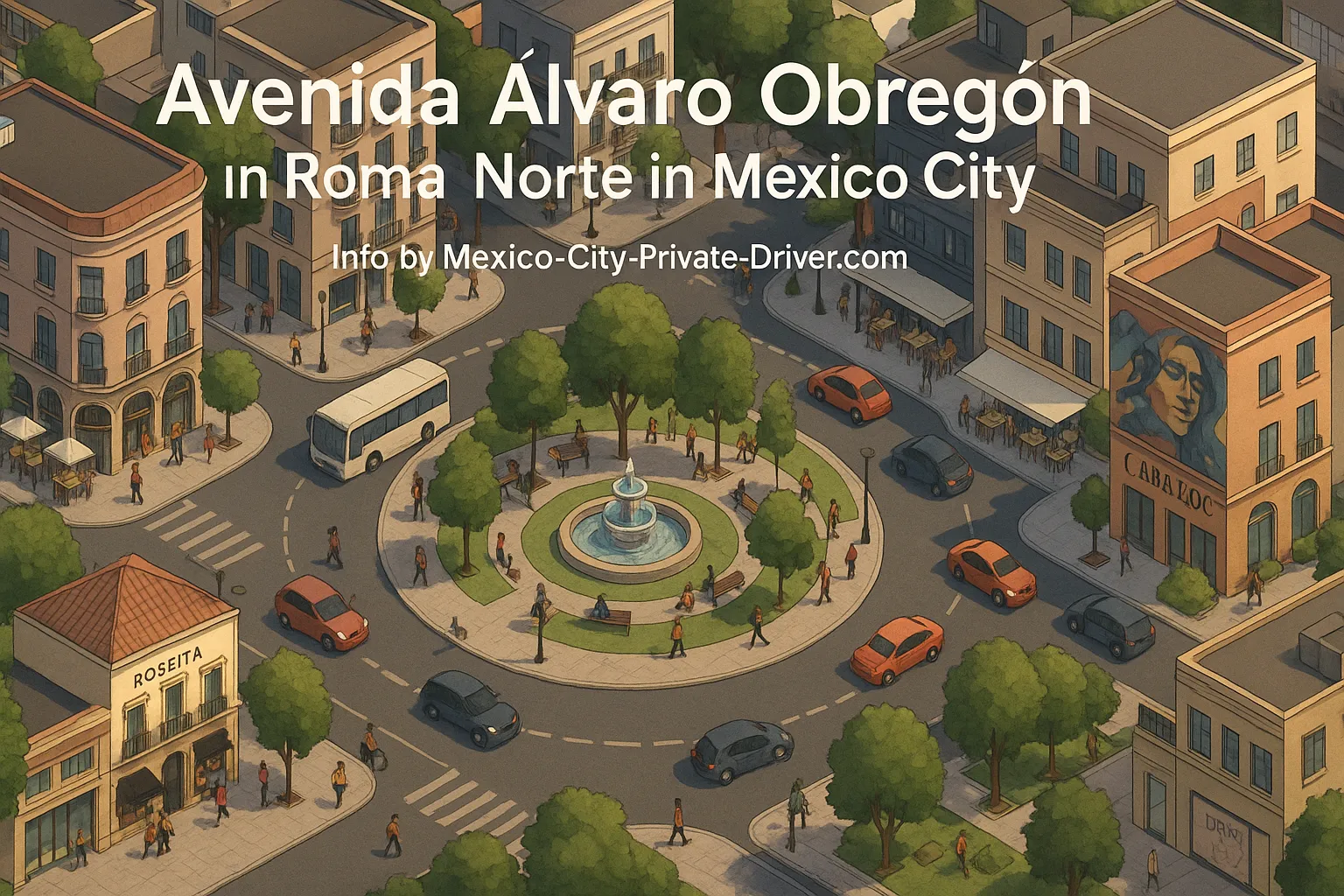Bolívar in Centro Histórico — a driver’s close-up view
As the owner and principal driver at Mexico-City-Private-Driver.com, I spend more hours on the streets of the Centro Histórico than I do at home. When people ask me about Bolívar — the short, quietly historic street that slices through part of the old city grid — I don’t answer from a guidebook. I answer from the driver’s seat: from the repeated routine of drop-offs and pickups, the single clients who ask for a rooftop view of the Zócalo, the theatre nights where timing is everything, and the mornings when a government convoy has closed a corridor for an official event.
Where Bolívar sits in the center of everything
Bolívar (sometimes referred to in conversations and searches as Calle Bolívar, Bolívar Street or even Avenida Bolívar in casual speech) is part of the dense, layered fabric of the Centro Histórico. It sits in the historic heart of Mexico City — a few blocks from the Zócalo and within easy walking distance of the Palacio Nacional, the Catedral Metropolitana, Templo Mayor, the pedestrian axis of Madero, and icons like the Torre Latinoamericana and the Palacio de Bellas Artes.
Because the Centro Histórico was laid out in a Spanish colonial grid and then evolved over centuries, many streets in the area are narrow, one-way, and lined with centuries-old buildings. That combination is what makes Bolívar feel intimate and central at once: it’s quiet compared to the pedestrian boom of Madero, but it places you immediately inside the action when you walk one block.
Neighborhood context for planning
- Centro / Centro Histórico: Bolívar is part of this zone, the beating cultural and political center.
- Juárez and Doctores: Short drives away for hotel pickups and theater nights.
- Roma and Condesa: twenty minutes (off-peak) — great neighborhoods for pre- or post-Centro dining.
- Polanco: 25–40 minutes depending on traffic; a common route for airport clients who want a day in Centro.
What drivers need to know: street layout, traffic, and rules
From a private-driver vantage point, Bolívar behaves like many of the smaller Centro Histórico streets: it’s narrow, often one-way, and flanked by buildings with minimal curbside parking. Here are the essentials I tell every client before we go out.
Street layout and vehicle access
- One-way and narrow: Expect tight turns. Your driver will usually pull to a legal drop-off point on a wider parallel street if I need to wait for you.
- Pedestrian influence: The pedestrianized core (Madero) sits just a block away; during weekends and holidays, foot traffic overflows onto nearby lanes, including Bolívar.
- Loading/unloading: There are lawful load zones and short-term drop-off spaces near major plazas. I make use of them so clients don’t have to walk long distances with luggage.
Traffic rhythms and timing
- Rush hours: 7:30–9:30 and 17:30–20:00 are the heaviest. The Centro gets gridlocked, and what would be a 10-minute drive at 11 a.m. can take 35–45 minutes in heavy traffic.
- Event closures: Political ceremonies, religious processions, and cultural festivals often close streets around the Zócalo with very little notice. I monitor announcements and usually call clients if a route is affected.
- Weekend tourism spikes: During national holidays or the weekends, pedestrian numbers surge and parking is tighter.
Parking and legal considerations
- Limited street parking: You won’t typically park on Bolívar for long. I advise using a nearby paid parking garage or a designated driver waiting spot.
- Fines & enforcement: Mexico City enforces vehicle rules more strictly downtown: double-parking, blocking driving lanes, or stopping on pedestrian crossings can mean fines or towing.
- Hoy No Circula: License-plate-based driving restrictions and emissions rules may affect airport transfers and long tours. I always check your vehicle eligibility ahead of pickup.
Public transport & connectivity
Bolívar is wonderfully connected. If you prefer to combine a private driver with a bit of public transport, or if you want to give me a nearby Metro or Metrobús station as a pickup point, here’s what you should know.
Metro and bus access
- Metro: The Centro is serviced by several Line stations that circle the Zócalo and nearby avenues. Metro stations like Zócalo and those one or two blocks away put you within a short walk of Bolívar — useful when you want to combine a short metro ride with private driving.
- Metrobús & RTP: Major surface bus corridors run on Eje Central and Reforma. If you’re coming from Condesa or Polanco, a transfer to these arteries can be efficient.
Why a private driver is the smart way to experience Bolívar and the Centro Histórico
Walking the Centro is essential; but here’s why a private driver matters:
- Comfort & speed: Avoid the sun, the crowds, and the juggling of directions. I get you closest to the entrance, and I know which legal curb to use for rapid drop-offs.
- Local timing intelligence: I know when the Zócalo will be quiet (perfect for photo ops), which lanes open up after a church procession, and which route to take if an emergency convoy appears.
- Multi-stop efficiency: Want a morning at the Templo Mayor, a quick coffee in an old colonial courtyard, and then a transfer to a rooftop for sunset views? I’ll route you in the most time-efficient way.
Local tips only a private driver would know
These are the micro-practices that save time and give a much better visitor experience. I teach my chauffeurs the same tricks.
Drop-off & pickup hacks
- Use slightly wider parallel streets: If Bolívar is too tight for parking, I’ll stop on a legal loading area one block over — it’s quicker and avoids fines.
- Rooftop rendezvous: Some clients prefer to meet on a hotel rooftop near the Zócalo at sunset. I can coordinate timed pickups so you have a seamless exit strategy after dinner or after fireworks.
- Pre-clearances: For large groups or frequent trips, I can secure access permissions for certain zones during special events (especially useful for wedding parties and film crews).
Best times to visit Bolívar and the Centro Histórico
- Early mornings (8:00–10:00): Soft light for photos, local markets unfolding, and streets that still whisper rather than shout.
- Late afternoons (16:00–18:30): Theater-goer energy, golden light on facades, better timing if you want to continue on to dinner in Roma or Condesa.
- Weeknights: Fewer tourists, better restaurant availability, and often easier parking for pickups.
Nearby attractions and suggested custom routes I run regularly
Because Bolívar sits in the core, I can combine most Centro attractions into efficient half-day or full-day circuits. Below are routes I offer frequently, with the logic I use to prioritize time and comfort.
Route A — Classic Centro half-day (best for first-time visitors)
- Pickup at your hotel in Condesa or Polanco early in the morning.
- Drive to the Zócalo area for a brief panorama and a photo stop near the Cathedral.
- Walk the Templo Mayor (I’ll park nearby on a legal loading lane).
- Stroll up Madero to the Torre Latinoamericana (optional elevator to the top for city views).
- Short coffee break on a quieter street—often clients ask me to pause on a courtyard near Bolívar where we can stretch legs.
- Travel onward to Palacio de Bellas Artes and Alameda Central for a museum visit or lunch.
Route B — Architecture & rooftops (photographers and urbanists)
- Pickup from a boutique hotel (Downtown, Gran Hotel, or a nearby guesthouse).
- Slow drive-by of colonial plazas and mansions around Bolívar, Donceles, and República de Argentina.
- Stop at a hidden courtyard cafe, then ascend to a rooftop with a view of the Zócalo at sunset.
- Finish with a short drive back to Condesa or a dinner reservation in Roma Norte.
Route C — Night culture & theatre
- Pickup at your hotel around 18:00.
- Drop-off near the theatre (Palacio de Bellas Artes or Teatro de la Ciudad). I will wait in a legal spot close by.
- After the show, a short drive to a recommended restaurant in Juárez or Zona Rosa.
- Late return to your hotel with a driver who knows the least-congested exit routes.
Hotels and pickup references I use daily
Many clients ask me to pick them up from hotels that are within a few blocks of Bolívar. I work with, and frequently pick up from, hotels including (but not limited to):
- Gran Hotel Ciudad de México — on the Zócalo, excellent vantage point and straightforward pickups when coordinated.
- Zócalo Central — very convenient if you want the first light of the square.
- Hotel Downtown — a favorite for clients who want a boutique stay inside a colonial building.
- Hilton Mexico City Reforma and others along Reforma — good for groups and those who prefer modern amenities before a Centro visit.
If your hotel is in Condesa, Roma, or Polanco, I’ll time the pickup to avoid the worst of the local traffic and find the best legal curb-side at your drop.
Safety and comfort: my promise as a private-driver operator
Centro Histórico is safe for tourists during the day, and by hiring a private driver you add two layers of comfort: local knowledge and safe, legal driving practices. I train all drivers in situational awareness, route flexibility, and respectful passenger service. If you have mobility needs, tell me in advance — I’ll pick the nearest accessible curb and plan a minimal-walk route.
Security & crowd control
- Large event strategy: If there’s a national event, I’ll schedule pickups before mass exodus times and select a pickup location outside cordoned zones.
- Cashless payments & receipts: For business travelers I provide detailed receipts and routes timed for invoicing.
The “wow” story I always tell about Bolívar
Here’s a memory I share that often surprises clients: one evening I was driving a small group of photographers down a narrow lane near Bolívar after a rooftop sunset shoot. Traffic had been rerouted because of a local festival, so I took a quiet side street. We stepped out under a soft, incandescent light and one of the photographers noticed an unmarked doorway. I slipped inside with the group — not an official museum, not an Instagram pop-up, but a fully restored colonial courtyard belonging to a private residence that opens its doors to artists once a year. There, in that perfectly framed stone courtyard, an elderly musician began playing boleros as if time were folding in on itself. The light, the music, the smell of coffee from a nearby kitchen — it was the purest, smallest possible version of magic in the city. No map. No line. Just a door I’ve passed hundreds of times and a moment that feels like a secret.
That moment is why I love Centro and why I prefer clients to take a little time, rather than rushing through a box-ticking tour. Bolívar is full of these micro-moments: small courtyards, private facades with carved lintels, rooftop views that step over tiled roofs to reveal the sprawl of modern Mexico City. As a driver, I don’t just deliver you from A to B; I help you find those doors.
Frequently asked practical questions (with insider answers)
Q: Can we be dropped directly on Bolívar?
A: Possibly, yes — but it depends on the time of day and whether the curb is clear. I usually plan for the nearest legal loading zone and guide my passengers on a short, secure walk to the exact entrance. That avoids fines and towing.
Q: How long should we plan for a Centro Histórico visit?
A: If you want a relaxed walk around the Zócalo, Templo Mayor, and a museum stop, plan half a day. For deeper exploration — palaces, several museums, a rooftop dinner — plan a full day. I build your schedule on the ground realities of traffic and local opening times.
Q: Is Centro OK at night?
A: Yes, many parts are lively and safe at night — especially around the main plazas, theatres, and restaurants. I avoid poorly lit backstreets after midnight, and I’ll always suggest a sensible walking route for evening plans.
Q: What about photography permissions?
A: For most public plazas and buildings photography is fine. If you want special access to a private courtyard or terrace (the type of places I know), I can often arrange it in advance.
Final thoughts — how I turn Bolívar into a personalized experience
Driving clients around Bolívar and the surrounding Centro Histórico is more than transporting bodies; it’s orchestrating moments. I coordinate timing around sunlight for photos, scan municipal bulletins for closures, juggle routes based on the city’s pulse, and have a mental map of quiet alleys and rooftop viewpoints that rarely appear in guidebooks.
When you book a trip with Mexico-City-Private-Driver.com and request a visit to Bolívar or the Centro Histórico, we’ll talk about your priorities — architecture, museums, food, photography, or a mix. I’ll recommend a route, tell you the best drop-off points, provide realistic timing, and—if you want—arrange for one of the little surprises the Centro hides (like that courtyard bolero moment).
How to book & practical next steps
- Tell me your hotel name (Condesa, Roma, Polanco, or in the Centro) and preferred pickup time.
- Specify if you want to prioritize museums, rooftops, dining, or a custom photographic route.
- I’ll confirm the estimated time, potential closures, and any restrictions like Hoy No Circula that might affect pickups.
If you want a personally guided, comfortable, and context-rich way to experience Bolívar and the Centro Histórico — from the practical to the unexpectedly magical — I’ll be the driver who knows the streets, the doors, and the small moments that become the memory of a trip. Book a consultation through Mexico-City-Private-Driver.com and we’ll design the route together
Martin Weidemann is a digital transformation expert and entrepreneur with over 20 years of experience leading fintech and innovation projects. As a LinkedIn Top Voice in Digital Transformation and contributor to outlets like Forbes, he now brings that same expertise to travel and mobility in Mexico City through Mexico-City-Private-Driver.com. His focus: trustworthy service, local insights, and peace of mind for travelers.


